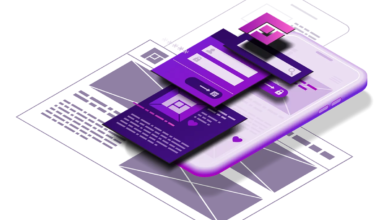
Examine the role that responsive design plays in creating unique websites. Find out how it improves website responsiveness, SEO, and user experience on various devices.
A visually appealing and user-friendly website is an essential tool for businesses looking to build a strong online presence in the fast-paced 21st-century digital landscape. Given the wide range of devices being used to access the internet, responsive design has become an essential component of contemporary custom web development techniques.
Comprehending Responsive Design
An approach to web development known as responsive design makes sure that a website looks and functions best on a variety of devices, including desktop computers, smartphones, and tablets. It entails developing adaptable layouts, pictures, and CSS media queries that change how content is presented automatically according to the screen size and orientation of the device.
The Importance of Responsive Design
1. A better experience for users
User experience is critical in the age of mobile-first browsing. Regardless of the device a visitor uses, responsive design guarantees a smooth and delightful experience. User satisfaction and engagement are increased by a website that adjusts to different screen sizes and offers readable text, simple navigation, and effective functionality.
2. Advantages of Search Engine Optimisation (SEO)
Websites that are optimized for mobile devices are ranked higher by search engines like Google. A website’s SEO efforts are aided by a responsive design in addition to serving a wide range of users. This can therefore have a favorable effect on the website’s accessibility and visibility, resulting in a rise in organic traffic.
3. Economy of Cost
Keeping separate websites for users of desktop and mobile devices can be difficult and resource-intensive. The development process is streamlined by responsive design, which produces a single, flexible version of the website. This guarantees content consistency across all platforms and lowers development and maintenance costs.
4. Flexibility with Upcoming Devices
New devices with varied screen sizes and resolutions keep coming out because technology is always changing. By enabling a website to smoothly transition to new devices, responsive design future-proofs it and spares companies from having to constantly update and redesign their websites.
Using Responsive Design in the Creation of Custom Websites
The process of developing custom websites is becoming more and more dependent on the integration of responsive design. Custom websites are made to match the unique requirements and brand of an organization, and a key component of providing a dependable and engaging user experience is responsive design.
Working with seasoned developers who are knowledgeable about responsive design is crucial when starting a custom website development project. They are able to smoothly incorporate media queries and flexible grids—two examples of responsive elements—into the architecture of the unique website.
The Function of Developing Custom Websites in Responsive Design
Developing a distinctive online presence that complements a brand’s objectives and identity is known as custom website development. When responsive design is integrated with custom development, the result is a website that not only embodies the brand’s aesthetic but works flawlessly on all platforms.
The capacity to customize features and functionalities to the unique requirements of the company is one of the main benefits of developing a custom website. The flexibility and accessibility of a custom website are improved by responsive design, whether it is an e-commerce platform, portfolio website, or corporate site.
The use of responsive design in the creation of custom websites necessitates balancing functionality and aesthetics. On all sizes of devices, the design should prioritize the user experience without sacrificing aesthetic appeal. With this all-encompassing approach to custom development, you can be sure that the website will look great and function well on a wide range of user devices.
Conclusion
In the ever-changing field of web development, responsive design is a vital component for building websites that meet the wide range of user needs. Success in custom website development requires businesses to integrate responsive design as they invest more and more in this area.
Through the implementation of responsive design in custom development processes, companies can create websites that are both authentic and enjoyable for users on a variety of devices. Responsive design will continue to play a crucial role in custom web development as technology develops, influencing how companies interact with their online audience.



